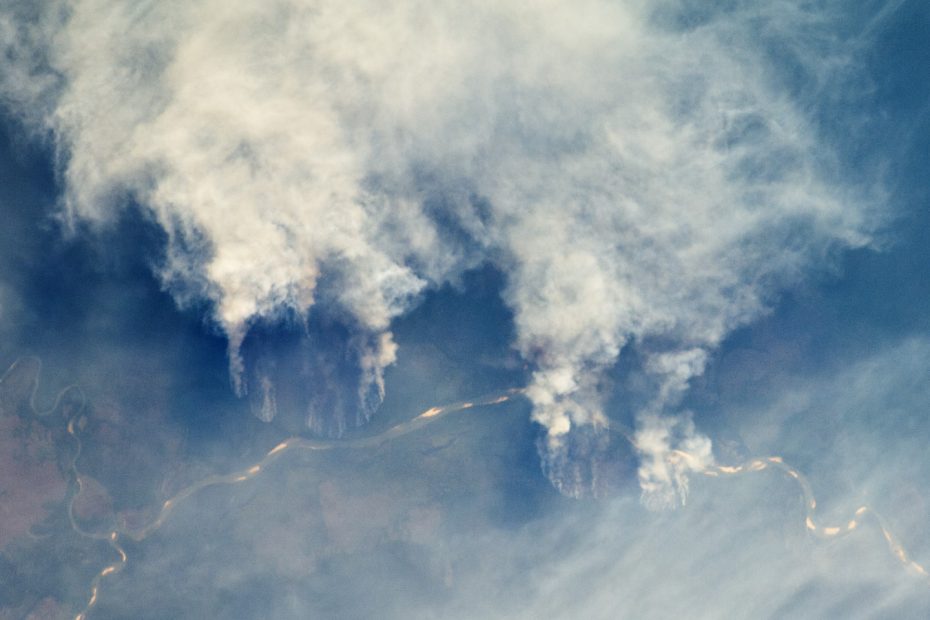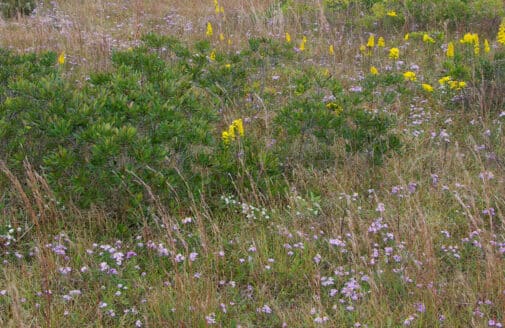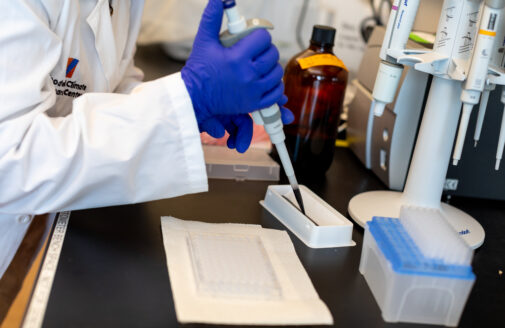Fires in southern Amazon could double in warming climate

Slash and burn forest clearing along Rio Xingu in Matto Grasso, Brazil (NASA Earth Observatory)
Manmade climate change will double the area burned by fires in the southern Amazon and push fire into protected areas, according to research published today in the journal Science Advances that included scientists from Woodwell Climate Research Center (formerly Woods Hole Research Center) and IPAM Amazônia. But avoiding new deforestation can have an equally massive impact, cutting total net fire emissions in half and helping prevent fires from escaping into protected areas and indigenous lands.
Results from an ecosystem-fire model suggest that Amazon fire regimes will intensify under both low- and high- greenhouse gas emission scenarios in the coming decades. Projections show that by 2050, up to 16% of the region’s forests could be burned at least once, emitting up to 17.0 petagrams (Pg) of CO2 equivalent into the atmosphere.
The good news is that the simulations also show that avoiding new deforestation could reduce net emissions by 38% under a low global emissions scenario (RCP2.6) and 56% under a high global emissions scenario (RCP8.5D). Preventing repeated burning could also promote faster forest recovery of carbon stocks, given that 26% of the areas burned more than once.
“What this paper shows is that the actions we take now, both in fossil fuel emissions and in forest protection, will reverberate for generations to come. We can’t deforest the Amazon and expect trees to regrow the same way in a changed climate. Today and tomorrow’s hotter and drier conditions mean that many historically forested areas will face new challenges to protect themselves against wildfires,” said Dr. Paulo Brando, Woodwell scientist and lead author of the study.
Even protected areas are projected to burn more frequently and intensely. While moist conditions currently prevent fires from spreading in the forest understory, those areas are projected to become more vulnerable to fire as severe droughts become more common.
“This study shows that forest protection may ultimately depend on the global effort to cut fossil fuel use. If we don’t take strong climate action, efforts to reduce fires along the drier edges of the Amazon will likely fail in the long run,” said Dr. Marcia Macedo, Woodwell scientist and co-author of the study.
Regionally and locally, researchers recommend cutting deforestation to zero as the most effective way to prevent future firestorms. Preventing wildfires will also require practical tools such as stronger fire management, expanded local fire brigades, and command-and-control operations against illegal agricultural fires. But these actions can go only so far. Without reducing global greenhouse gas emissions to the atmosphere, regional temperatures will continue to rise and Amazon wildfires will likely become more intense and frequent.
“It appears inevitable that much of the southern Amazon will become more flammable in the near future. But the outcomes do not have to be catastrophic. Ending deforestation, transitioning away from fire-dependent to fire-free agriculture and agroforestry systems, and expanding fire suppression training will make a huge difference,” said Dr. Michael Coe, Woodwell scientist and co-author of the study. “As our recent studies have shown, taking these actions would also have substantial economic benefits,” he added.
Background information
The Amazon has lost over 800,000 square kilometers of forest over the past 50 years, an area larger than Texas, much of it to clear land for cattle pasture and crop production. Previous studies led by Dr. Brando have shown that, as the global climate crisis causes the region to become warmer and drier, remaining forests face increasing stress from extreme events such as droughts, wildfires and extreme windstorms.
Studies show policy changes can help preserve forest. A report by Woodwell Climate Research Center and IPAM Amazonia scientists showed deforestation in the Brazilian Amazon declined by 70% between 2004 and 2014, avoiding the equivalent of 12% of global annual CO2 emissions. However, deforestation and fires in the Brazilian Amazon spiked in 2019 to their highest level in a decade.







